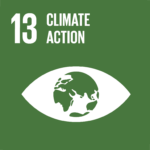The discussions at the U.N. conference (COP29) in Azerbaijan offer a crucial opportunity for MDBs to reaffirm and expand their commitments, with the hope of catalyzing the trillions of dollars needed to build a resilient, low-carbon future.
As global warming drives extreme weather events across the world, nations are scrambling for solutions. Preparing for hurricanes, wildfires, droughts, and other climate disasters is proving costly, with adaptation efforts and the transition to renewable energy requiring trillions of dollars. Central to these efforts are multilateral development banks, institutions that serve as the backbone of climate finance for the developing world. At the annual U.N. climate conference beginning this Monday, discussions are set to focus on how to expand and secure these financial commitments to meet the immense demands of climate action.
RELEVANT SUSTAINABLE GOALS



Multilateral Development Banks: Financing for a Climate-Resilient Future
Multilateral development banks (MDBs) have emerged as vital sources of climate finance for developing nations, which often lack the resources or credit access that wealthier countries enjoy. Funded by international contributions, these banks, including the World Bank, provide billions of dollars annually to help countries reduce their greenhouse gas emissions and build resilience against climate impacts.
In 2022, thanks in part to MDBs, the world met a climate finance goal set in 2009: to provide $100 billion annually to help developing nations address climate change. However, experts argue that this amount falls drastically short. According to the Climate Policy Initiative, current levels need to be increased fivefold to limit global warming to 1.5 degrees Celsius (2.7 degrees Fahrenheit) above pre-industrial levels. “The core of it is getting a goal that is going to catalyze the actions that fills the really significant climate finance gap,” said Tim Hirschel-Burns of Boston University’s Global Development Policy Center.
The Growing Divide: Who Will Pay?
A central debate at this year’s conference is expected to be about financing sources. Dharshan Wignarajah of the Climate Policy Initiative points out that the burden of climate finance increasingly raises questions of fairness and responsibility. “Ultimately it comes down to who pays,” said Wignarajah, highlighting the tension that often underpins international climate negotiations.
Developing nations are heavily reliant on MDBs for funding, unlike their industrialized counterparts. In the United States and Canada, for example, over half of climate projects in 2022 were funded by commercial banks and corporations, while in sub-Saharan Africa, private lenders financed just 7 percent of similar projects. For many developing nations, borrowing from private lenders is prohibitively expensive due to high interest rates tied to low credit ratings. By leveraging their higher credit ratings, MDBs can borrow funds at lower rates and then provide these funds to developing countries at a more reasonable cost.
Though MDBs are championed for their climate finance contributions, some of their projects have inadvertently hindered climate goals by supporting fossil fuels. Despite progress, fossil fuel investments continue to rise, with global spending on oil, gas, and coal expected to reach $1.1 trillion in 2024. MDBs have been criticized for their role in this, as many of their projects still involve fossil fuel infrastructure. A report from the Clean Air Fund, an advocacy group for clean air initiatives, argues that these investments “lock in a high-carbon pathway” for countries.
“It should be assisting countries to leapfrog,” said Clean Air Fund CEO Jane Burston, alluding to the possibility of developing nations industrializing through renewable energy rather than fossil fuels. The World Bank’s International Bank for Reconstruction and Development, for example, provided $105 million toward coal plant upgrades in India, although the funds helped to reduce the plants’ emissions. The Clean Air Fund estimates that the World Bank spent $2.7 billion on fossil fuel-related projects between 2018 and 2022, while it invested 32 times that amount in renewables over the same period.
Shifting Policies and the Move Toward Renewable Energy
Responding to these criticisms, MDBs have committed to increasing their climate finance and aligning with the 2015 Paris Agreement’s goals. The World Bank, for instance, allocated $42.6 billion to climate finance in its most recent fiscal year—a 10 percent increase—and pledged that nearly half of its future lending would go toward climate-related projects. The Asian Development Bank (ADB) also announced it would stop financing coal projects, investing nearly $10 billion in climate finance in 2023 alone, with plans to support $100 billion in climate projects by 2030.
In Vietnam, where coal still accounts for about half of power generation, the ADB has shifted its focus toward renewable energy, funding $60 million in wind energy initiatives between 2021 and 2022. Vietnam now ranks seventh globally in planned wind energy development, showcasing the potential impact of targeted MDB investment.
Yet critics argue that such policy shifts may not go far enough. Bronwen Tucker of Oil Change International pointed out that all nine major MDBs still fund fossil fuel projects under certain conditions. “The MDBs can’t be climate bankers if they are still fossil bankers,” she said.
Lead image courtesy of Flickr Images
You may also be interested in :
Indonesia Secures $500 Million Loan ADB to Accelerate Energy Transition




